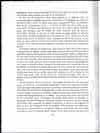Amundsen's Claim in the North-West Passage (1975)
As the summer of 1905 wore on, Amundsen decided that the time had come to move on. The scientific equipment which, for nineteen months, had been registering their magnetic recordings, was dismantled and packed. The Eskimos received priceless gifts like empty tins and odd pieces of wood. A spare sledge was given to a family with a crippled son whom for years his parents had dragged about on a sealskin. The young man, who was reputed to be a sorcerer, gave Amundsen his magic brow-band of deerskin in gratitude. When leaving the German Marine Observatory in Hamburg, Amundsen had promised Professor Neumayer to leave a photograph of him as near the Magnetic Pole as possible. This promise was duly performed at a time when no inquisitive Eskimo was about. As June drew towards its end, the weather grew warm, snow cleared from the land, and channels began to open through the ice. Every augury promised a year as favourable for sailing as 1903 had been. At the end of July a freshwater pond near the boat was used as a swimming pool. The Eskimos looked on in amazement but did not try to imitate the white men, who were undoubtedly mad. One Eskimo, whom they had planned to take home with them, suffered an emotional crisis at the last minute: he was afraid that the white men would kill him. When Amundsen argued that, on the contrary, the Kabluna were angels of benevolence, the Eskimo pointed to alarming pictures of the Boer War which he had found in illustrated magazine’s in the ship’s cabin. After this, another Eskimo volunteered for the post as honorary white man and was ceremonially scrubbed down and dusted with insecticide. By this time the harbour was free of ice and the ice in Rae Strait had become the blue colour which indicated that soon it would melt. On 13 August the Gjōa set sail to the west. The wind was in the north-east, breaking up the ice.
Amundsen was launched on – as he said – the most fascinating of all the problems of exploration before humanity, the discovery of the North-west Passage. The weather was bad – thick fog and a contrary, changeable wind. Ten fathoms and a dry bottom, the leadsman reported. At Booth Point they came to a halt, faced by great masses of ice drifting towards them. When the fog cleared, they saw islands to the west, with clear water beyond. In Victoria Strait there were ice-floes across the way from shore to shore but the ice was loose enough for them to get through. Picking his way through one archipelago after another, guided by a man posted in the crow’s nest to give warning of any reefs beneath the surface of the water, Amundsen made a devious course round King William Island. The channel swiftly changed from deep to shallow, from seventeen fathoms to five. The leadsmen and the look-out sounded and shouted, watched and signalled in wild, sustained activity, hour after hour without sleep. At the helm, Amundsen, his heart pounding with excitement, translated into quick changes of course the information sent him by the others. A man stood ready to drop anchor if the water became too shallow. After nudging their way through a chaos of sharp, low-lying rocks, at last they left the islands behind. And on 17 August, they cast anchor on the west side of Cape Colbourne by the south of Victoria Land. From now onwards they would be entering waters which ships coming from the west had traversed. They had sailed through the unexplored section of the North-west Passage.




